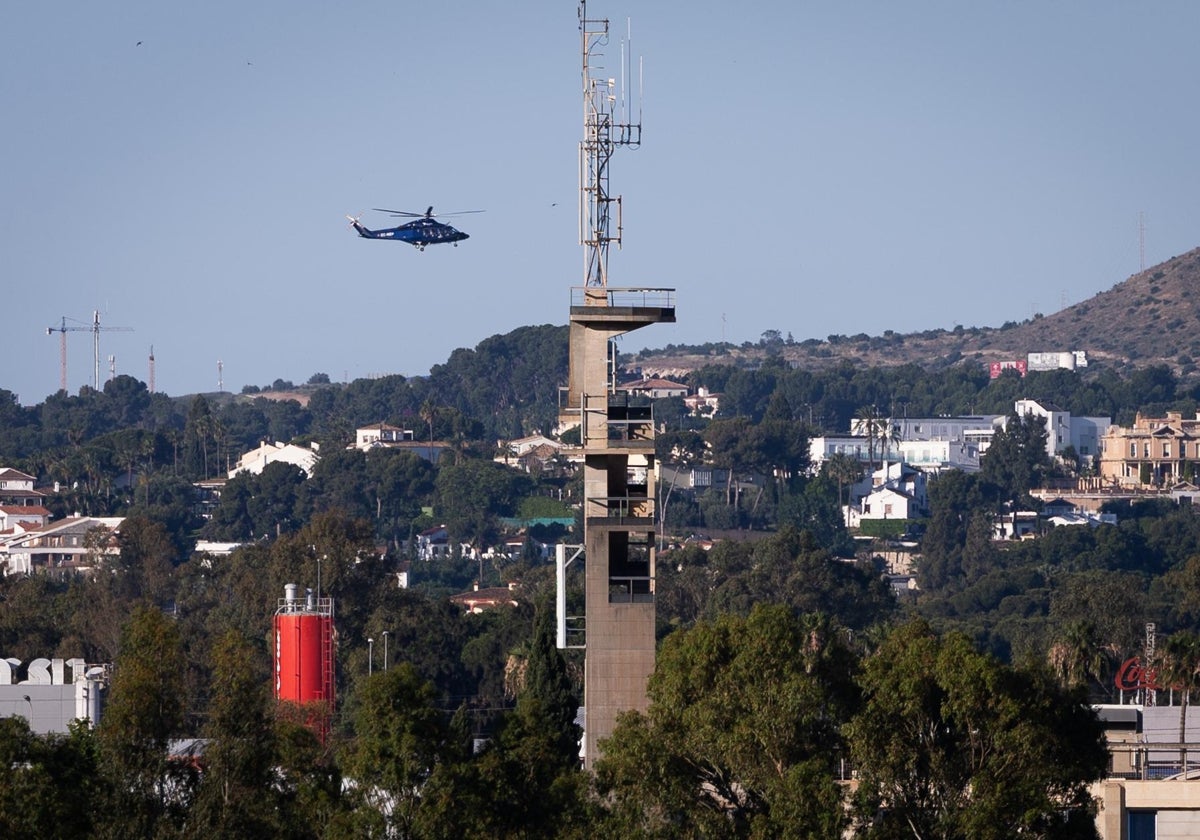Demolition starts of part of Canal Sur TV tower to improve operations at Malaga Airport
More than a decade after its inauguration, the second runway will be able to cope with landings and take-offs from all directions
Work has started this week to shorten the communications tower at the Canal Sur television studios in Malaga by 10 metres. The shorter town will mean that the second runway at Malaga Airport, inaugurated in June 2012, will be able to use more of its potential and capacity for landings and take-offs.
The 3,000-metre runway has only been partially operational due to two factors: the ecological impact on the mouth of the Guadalhorce river and the height of the tower at the nearby studios of Canal Sur, Andalucía's television channel.
Now, at least the latter obstacle is being removed. In a few weeks, the top ten metres of the tower will be dismantled and the aerials removed, but the rest of the 42.4-metre structure will remain intact, kept as a "symbol". The logo will also remain untouched, maintaining its status as a sign of the relationship between Canal Sur and Malaga.
At the moment, the process is in its preparatory stage, which will continue for about two weeks. The dismantling of the tower itself will start around the end of May or the beginning of June. Work will be carried out at night, so that all of Canal Sur's operations, including the broadcasting of radio and television, can continue as per usual.
What is the benefit?
It is expected that the work will last two months, provided that no problems arise. Spain's airport operator Aena is in charge of the financing, while Malaga Airport will be validating the second runway's operations. Once validated, this will allow aircraft to approach (land) using that runway.
This improvement will provide more operational efficiency, without implying an increase in flights and passengers at Malaga Airport
The airport is currently operating with "one and a half runways", because the second runway cannot be flown over. Therefore, when the obstacles are removed and everything is approved, "all four runways" will be available. Although there are physically only two runways, in air navigation the airfield is considered based on direction, so the number of runways will increase from three to four.
However, this second runway will be used only occasionally due to its environmental impact on the Guadalhorce river, which is a protected bird habitat. The facility will have a supporting function in case there is an issue with the main runway. It will be activated during emergencies, when the main runway is undergoing repair or other work, or when an aircraft blocks the runway.
"In those cases, it will give us a lot of versatility, more safety and resilience," said sources. The current work will allow the runway to be used in both directions, not just one as it has been until now.
Calibration flights
The runway will not be open for fully operational activity immediately. Although the demolition of the tower will be completed this summer, procedures will have to be adjusted and flights with a calibration aircraft will have to fine-tune the calculations. In addition, complex safety procedures must be undertaken before anything is finished and open.
It will therefore take several more months before the runway is used in its full potential. It is important to note that this initiative will improve efficiency, without leading to an increase in flights and passengers.
The main runway is operational in both directions, depending on the wind direction at any given time. As a rule, aircraft land and take off into the wind. When there is an easterly wind, planes land over the land. When there are westerly winds, they do so from the bay. The opposite happens with take-offs: when an easterly wind is present, planes depart towards the sea; towards the land in the case of westerly winds.

